Abstract
We determined the antibody response against the Ixodes dammini spirochete in Lyme disease patients by indirect immunofluorescence and an enzyme-linked immunosorbent assay (ELISA). The specific IgM response became maximal three to six weeks after disease onset, and then declined, although titers sometimes remained elevated during later disease. Specific IgM levels correlated directly with total serum IgM. The specific IgG response, often delayed initially, was nearly always present during neuritis and arthritis, and frequently remained elevated after months of remission. Although results obtained by indirect immunofluorescence and the ELISA were similar, the ELISA was more sensitive and specific. Cross-reactive antibodies from patients with other spirochetal infections were blocked by absorption of sera with Borrelia hermsii, but titers of Lyme disease sera were also decreased. To further characterize the specificity of the humoral immune response against the I. dammini spirochete, 35S-methionine-labeled spirochetal antigens were identified by immunoprecipitation with sera from Lyme arthritis patients. These polypeptides had molecular weights of 62, 60, 47, 37, 22, 18, and 15 kDa, and were not recognized by control sera. We conclude that the ELISA, without absorption, is the best method to assay the humoral immune response in Lyme disease, and we have identified methionine-containing spirochetal polypeptides that may be important in Lyme arthritis.
Full text
PDF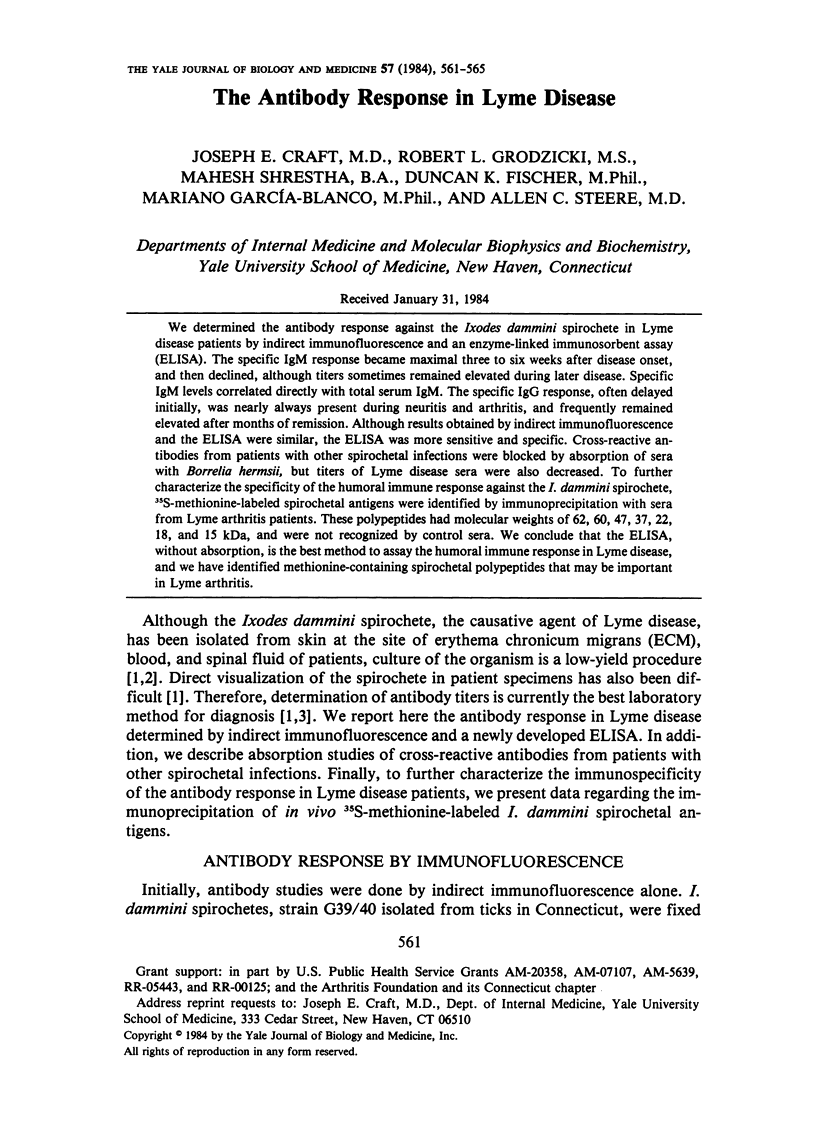
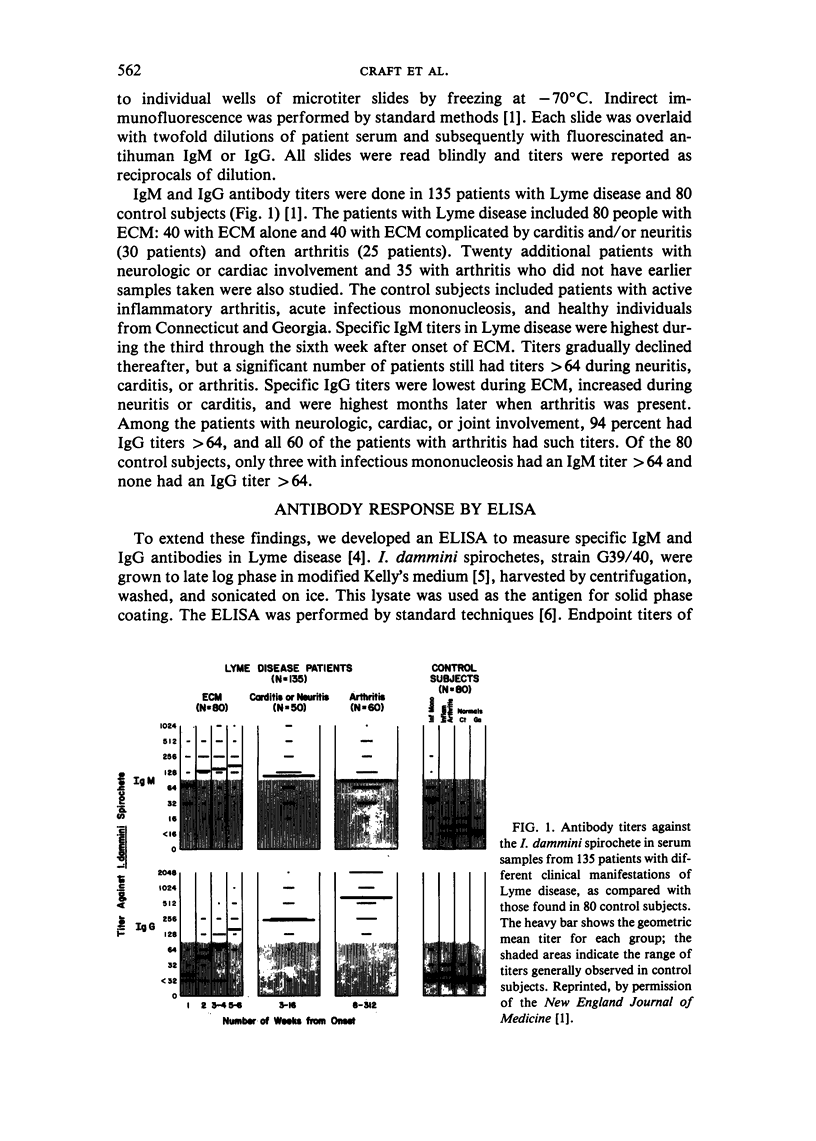
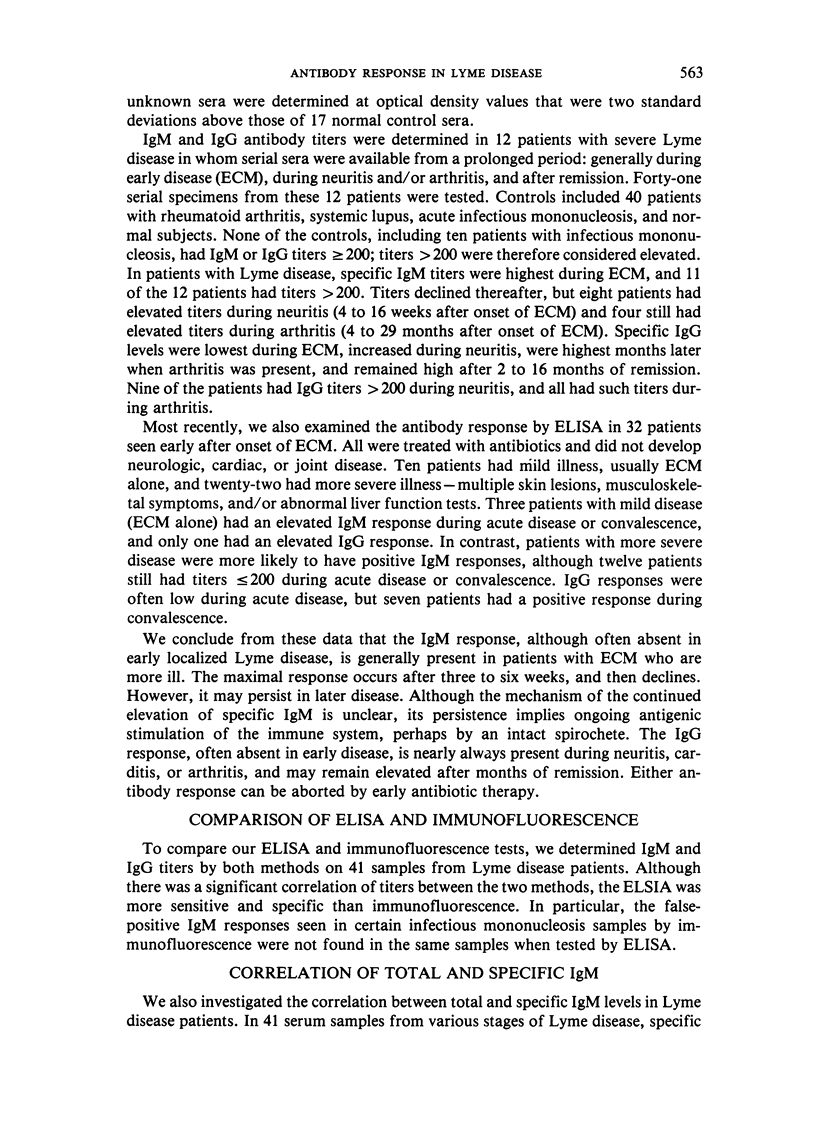
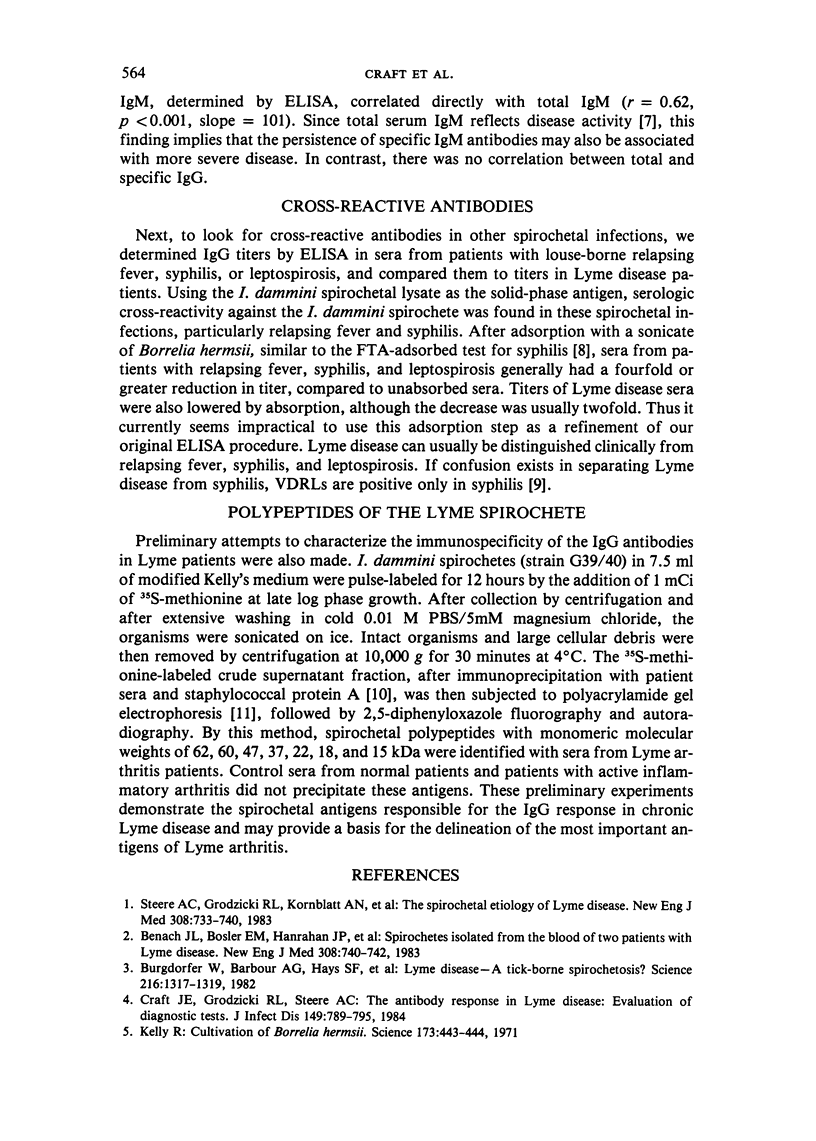
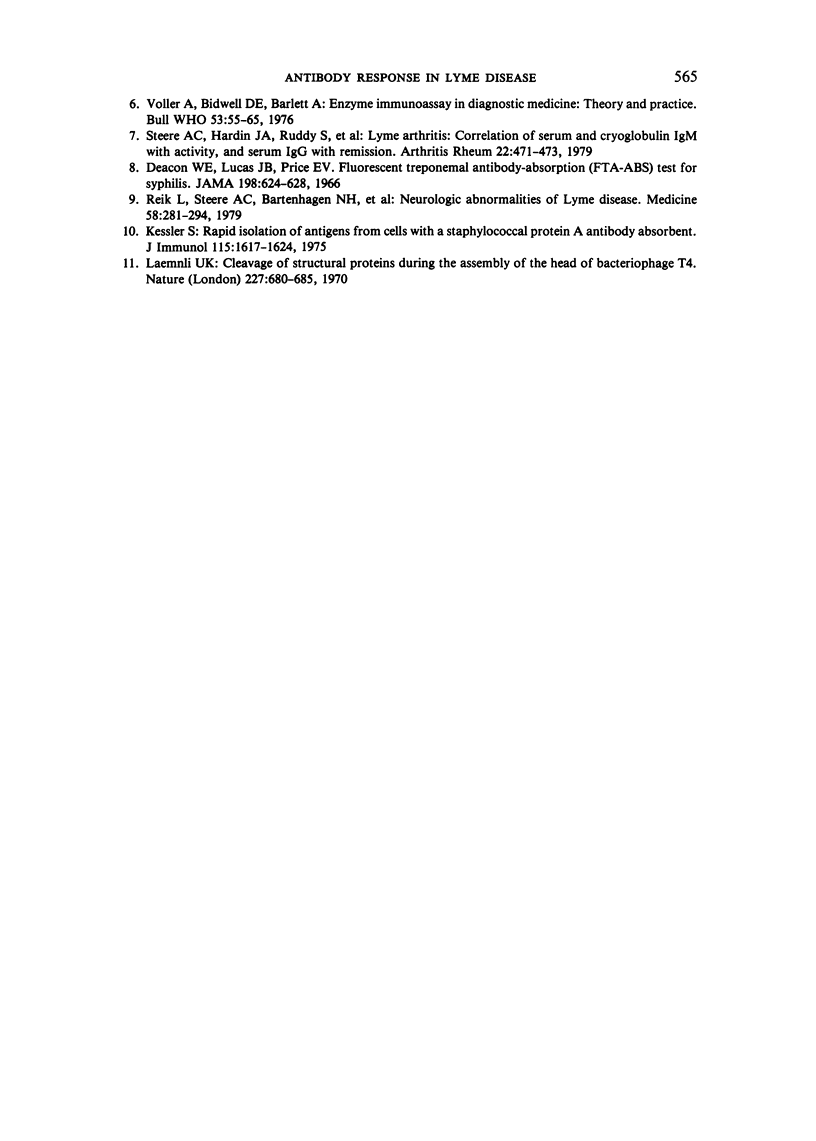
Selected References
These references are in PubMed. This may not be the complete list of references from this article.
- Benach J. L., Bosler E. M., Hanrahan J. P., Coleman J. L., Habicht G. S., Bast T. F., Cameron D. J., Ziegler J. L., Barbour A. G., Burgdorfer W. Spirochetes isolated from the blood of two patients with Lyme disease. N Engl J Med. 1983 Mar 31;308(13):740–742. doi: 10.1056/NEJM198303313081302. [DOI] [PubMed] [Google Scholar]
- Burgdorfer W., Barbour A. G., Hayes S. F., Benach J. L., Grunwaldt E., Davis J. P. Lyme disease-a tick-borne spirochetosis? Science. 1982 Jun 18;216(4552):1317–1319. doi: 10.1126/science.7043737. [DOI] [PubMed] [Google Scholar]
- Craft J. E., Grodzicki R. L., Steere A. C. Antibody response in Lyme disease: evaluation of diagnostic tests. J Infect Dis. 1984 May;149(5):789–795. doi: 10.1093/infdis/149.5.789. [DOI] [PubMed] [Google Scholar]
- Deacon W. E., Lucas J. B., Price E. V. Fluorescent treponemal antibody-absorption (FTA-ABS) test for syphilis. JAMA. 1966 Nov 7;198(6):624–628. [PubMed] [Google Scholar]
- Kelly R. Cultivation of Borrelia hermsi. Science. 1971 Jul 30;173(3995):443–444. doi: 10.1126/science.173.3995.443. [DOI] [PubMed] [Google Scholar]
- Kessler S. W. Rapid isolation of antigens from cells with a staphylococcal protein A-antibody adsorbent: parameters of the interaction of antibody-antigen complexes with protein A. J Immunol. 1975 Dec;115(6):1617–1624. [PubMed] [Google Scholar]
- Laemmli U. K. Cleavage of structural proteins during the assembly of the head of bacteriophage T4. Nature. 1970 Aug 15;227(5259):680–685. doi: 10.1038/227680a0. [DOI] [PubMed] [Google Scholar]
- Reik L., Steere A. C., Bartenhagen N. H., Shope R. E., Malawista S. E. Neurologic abnormalities of Lyme disease. Medicine (Baltimore) 1979 Jul;58(4):281–294. doi: 10.1097/00005792-197907000-00001. [DOI] [PubMed] [Google Scholar]
- Steere A. C., Grodzicki R. L., Kornblatt A. N., Craft J. E., Barbour A. G., Burgdorfer W., Schmid G. P., Johnson E., Malawista S. E. The spirochetal etiology of Lyme disease. N Engl J Med. 1983 Mar 31;308(13):733–740. doi: 10.1056/NEJM198303313081301. [DOI] [PubMed] [Google Scholar]
- Steere A. C., Hardin J. A., Ruddy S., Mummaw J. G., Malawista S. E. Lyme arthritis: correlation of serum and cryoglobulin IgM with activity, and serum IgG with remission. Arthritis Rheum. 1979 May;22(5):471–483. doi: 10.1002/art.1780220506. [DOI] [PubMed] [Google Scholar]
- Voller A., Bidwell D. E., Bartlett A. Enzyme immunoassays in diagnostic medicine. Theory and practice. Bull World Health Organ. 1976;53(1):55–65. [PMC free article] [PubMed] [Google Scholar]


